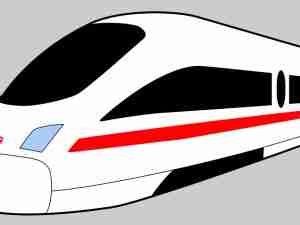A plan to develop a $2.8 billion railway and port to ferry coal in Mozambique may collapse because miners are balking, according to the man trying to build it.
Failing to get the project off the ground would deprive the southern African country of a source of revenue it’s come to rely on as it develops world-class natural-gas deposits and struggles to get donor support after disclosing previously hidden debt. Coal is Mozambique’s biggest export.
Thai Mocambique Logistica SA, the project organizer, needs to secure financing next year in order to meet a deadline for the first trains to start rolling to the Indian Ocean by 2023, said Managing Director Jose Fonseca. He’s yet to get India’s International Coal Ventures Ltd. and Brisbane-based Talbot Group Investments Ltd., which own mines in the country, to commit to using the line.
“If it doesn’t start next year, then this project is dead,” Fonseca said in an interview in the capital, Maputo. Neither of the companies responded to requests by Bloomberg for comment.
The line, from Moatize in the northwest to Macuse at the coast, has been long-delayed and early targets were for operations to start this year. TML awarded the contract to build the railway to Mota-Engil SGPS SA and China Machinery Engineering Corp. last year
Economic Crisis
Increased coal output in Mozambique by Brazilian mining giant Vale SA in 2016 and 2017 helped stave off an economic crisis after the government owned up to concealing about $2 billion of debt. Further lifting exports could boost state revenue until natural gas mega-projects that companies including Eni SpA and Anadarko Petroleum Corp. are building in the north of the country start contributing.
Vale, Mozambique’s biggest producer, ships coal using its own railway and port.
Some analysts reckon there’s insufficient demand for the 40 million metric tons a year Fonseca wants to ship. Coal has fallen out of favor globally because of pollution concerns, leading to a drop in investment in mining of the fuel and providing a fillip for cleaner natural gas and renewable energy.
“The new line sounds to me a bit of wishful thinking,” said Xavier Prevost, a coal analyst at XMP Consulting CC in South Africa. “To get to that tonnage these days is not easy. I don’t think the market will be able to handle that.”
Steady Demand
Still, consumption of the fuel that’s used in European power stations remains steady, helping prices more than double since early 2016 to nearly $100 per ton. Futures for Australian coking coal used in steel mills have made similar gains to nearly $200 per ton.
Fonseca estimates that ICVL could take up nearly half of the 40 million-ton-per-year capacity the first phase of the port and rail project will be able to handle. Talbot’s nearby Revuboe project could export 10 million tons per year, he said.
Global coal demand is expected to remain flat through 2022, according to International Energy Agency forecasts. Even as countries in Europe cut back in favor of solar and wind power, developing economies like India will continue to rely on coal for at least part of their new electricity generation.
Mozambique has the resources to fill some gaps in the market, according to Henrique Pinheiro, a geologist who’s worked for coal companies in Mozambique. There could be enough demand to justify the rail line and port if it’s built soon, he said.
“A cost-effective, affordable and sustainable, new rail line such as the Macuse corridor will ensure that Mozambique coal will be competitive in the seaborne trade and survive the peaks and troughs of coal prices,” Pinheiro said. “But unless it comes into play soonest, the opportunity to finally secure the coal industry will be lost for a long time.”







